10. The Darkest Substance Known to Man
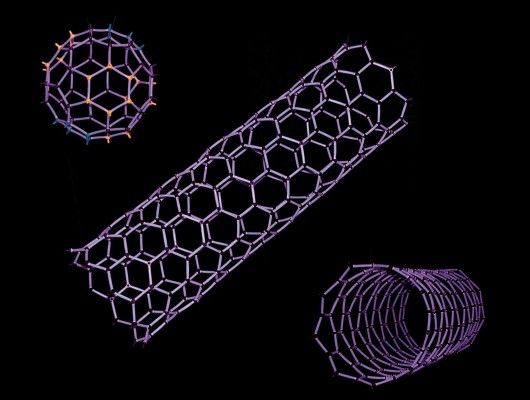
What do you get when you stack carbon nanotubes on their ends and sandwich them together? A material that absorbs 99.9% of the light that touches it. The microscopic surface of the material is rough and uneven, which breaks up the light and makes it a poor reflector. Then add to that carbon nanotubes act as superconductors in certain arrangements, which makes them excellent light absorbers, and you have a perfect storm of black. Scientists are really excited about the potential applications of the substance; since virtually no light is “wasted”, it would be used to improve optical tools like telescopes, and even be used to make nearly 100% efficient solar collectors.
9. The Most Flammable Substance

A lot of things burn with astounding intensity; Styrofoam, napalm, marshmallows are just the beginning. But what if there was a material that could set sand on fire? Okay, so clearly that was a loaded question, but it was a necessary set-up. Chlorine triflouride has the dubious honor of being terrifyingly flammable, to the point that history’s evil boy-scouts, the Nazis, deemed it too dangerous to work with. When people who consider genocide their life’s goal don’t want to use something because it is too deadly, it bears treating it with some caution. There is a story that a ton of the stuff was spilled once and caught fire, and it burned through 12 inches of concrete and another meter of sand and gravel before going out. I hate to say it, but in this case, the Nazi’s were right.
8. The Most Toxic Poison

Quick, what’s the last thing you would want to inject into your face? Aside from something that burns through concrete, and maybe the world’s worst acid (coming soon), I would think “The world’s deadliest poison” would be in the top 3 with them. Not so, though, in the medical community; you’ve all heard of Botox, no doubt, and “deadliest poison” is it’s main claim to fame. Botox uses botulinum toxin, produced by the bacteria Clostridium botulinum, and it is so deadly, an amount equal to a grain of salt is enough to kill a 200 lb man. In fact, they even suggest that it would only take 4kg, properly dispersed, to kill every last person on earth. Maybe those crows feet around your eyes would be better treated with an angry rattlesnake….
7. The Hottest Substance Ever

There are few things known to man hotter than the interior of a freshly microwaved Hot Pocket, but this stuff manages to break even that record. Created by smashing gold atoms together at nearly the speed of light, it’s called a quark-gluon soup, and it reaches a balmy 4 trillion degrees Celsius, a mere 250,000 times hotter than the inside of the sun. The amount of energy released in the collision was sufficient to melt protons and neutrons, which in itself could be featured on a list of things you never even knew were possible. Scientists think this substance could give us an idea of what the birth of our universe was like, so it’s good to see they aren’t just creating tiny supernovas for the fun of it. However, the really good news is that the soup was only a trillionth of a centimeter across, and only lasted for a trillionth of a trillionth of a second.
6. Most Acidic Acid
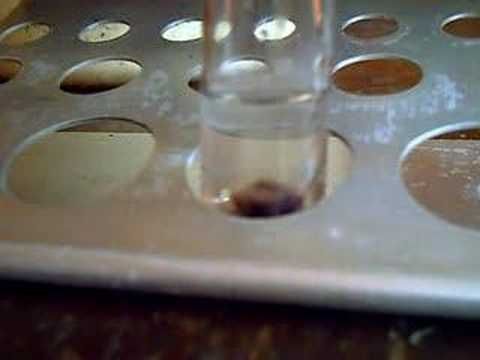
Acid is scary stuff; they gave one of the scariest movie monsters ever acid blood to make it scarier than just a simple killing machine (the Alien), so it’s pretty ingrained in our psyche that getting dissolved is bad. If the Aliens had been filled with fluoroantimonic acid, they not only would have probably fallen through the floor until they hit dirt, the vapors given off by their dying bodies would have killed everyone around them. It is 21019 times more powerful than sulphuric acid, and can even eat through glass. And it explodes when exposed to water. And when it is reacting, it gives off poisonous fumes that can kill everyone in a room. Maybe we should move on from this one…
5. The Most Explosive Expolosive
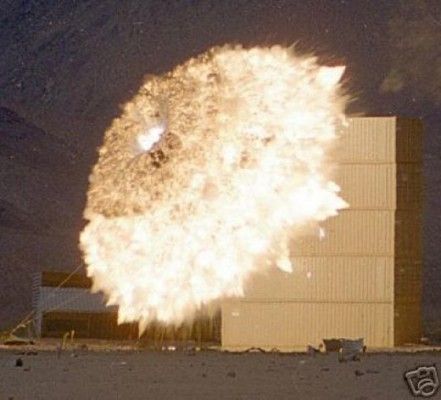
This particular honor is actually currently shared between two compounds; HMX and Heptanitrocubane. Heptanitrocubane mostly exists in labs, and is similar to HMX, but has a denser crystal structure, giving it greater destructive potential. HMX, on the other hand, exists in quantities large enough to be physically threatening. It is used in solid rocket fuel, shaped charges, and even nuclear weapon detonators. That last one is the scariest, because despite how easy movies make it look, starting the fission/fusion reaction that makes bright glowing radioactive mushroom clouds is not an easy ball to get rolling, but HMX is up to the task.
4. The Most Radioactive Substance
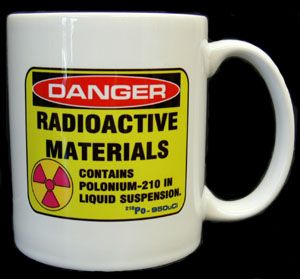
Speaking of radiation, it’s worth noting that the glowing green rods of “plutonium” on the Simpsons are completely fictional. Just because something is radioactive does not mean it glows. I mention that because Polonium-210 is so radioactive, it glows blue. A former soviet spy, Alexander Litvinenko, was duped into consuming some without his knowledge, and he died of cancer shortly thereafter. This is not that kind of thing you ever want to mess with; the glow is caused by the air around it being excited by the radiation, and it can actually heat objects nearby. If the fact that something highly radioactive gives off heat, keep in mind that when we usually think “radiation”, we are thinking of things like a nuclear reactor or explosion, where an actual fission reaction is happening. This is just your run of the mill loss of ionized particles, not a runaway splitting of atoms.
3. The Hardest Substance
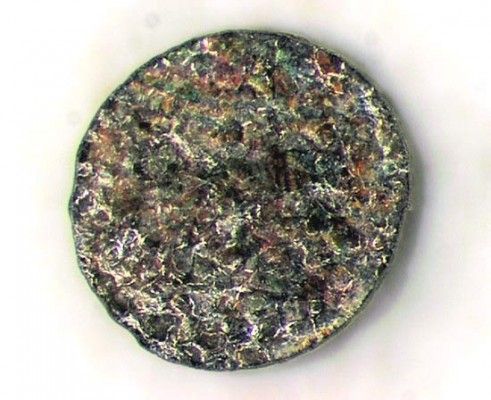
If you thought the hardest substance on earth was diamond, that was a good, if inaccurate guess. It is technically an aggregated diamond nanorod. It is actually a collection of nano-scale diamonds, and it is the least compressible, hardest substance known to man. They aren’t naturally occurring, which is actually kind of cool, since it implies we could one day coat our cars in this stuff and just walk it off when we collide with a train (not really). It was developed in Germany in 2005 and will likely be used in the same capacity as industrial diamond, except will be more wear-resistant than regular diamonds. That’s harder than algebra.
2. The Most Magnetic Substance

If Magneto was a small black lump, that would be him. The substance, developed in 2010 out of iron and nitrogen, is 18% more magnetic than the previous record holder, and is so powerful, it has forced scientists to revisit how magnetism works. The man who discovered the substance has taken great pains to ensure that his work can be reproduced by other scientists, because a similar compound was reported developed in Japan back in 1996, but other physicists could not replicate it, so it was never officially accepted. No word on whether Japanese physicists have to commit Sepuku under these circumstances. If it can be reproduced, it could spell a new age of efficient electronics and magnetic engines, maybe even powered by number 10.
1. The Most Super Superfluid
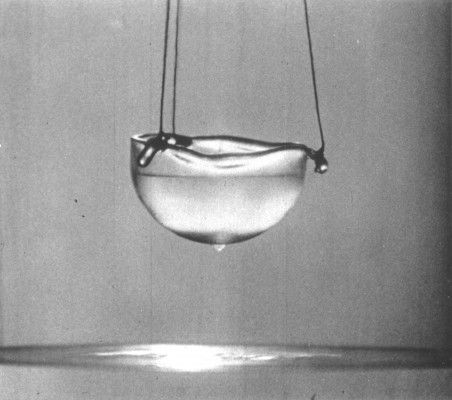
Superfluidity is a state of matter (like solid or gaseous) that occurs at extremely low temperatures, has high thermal conductivity (every ounce of it is always exactly the same temperature), and no viscosity. Helium 2 is the “most” example of this. A cup of He2 will spontaneously flow up and out of a container, as if it just decided to leave. It also seeps right through otherwise solid materials because its complete lack of friction allows it to flow through otherwise invisible holes that would not allow regular helium (or water for that matter) to flow through. He2 did not wind up at number 1 just because of its ability to act like it has a mind of its own, though, it is also the most efficient thermal conductor on earth; several hundred times that of copper. Heat moves so fast through Helium 2 that it moves in waves, like sound (and is fact known as “second sound”), rather than dispersion, where it simply transfers from one molecule to another. Incidentally, the forces governing He2’s ability to crawl walls is called “third sound”. You can’t get much more extreme than a substance that required the definitions of 2 new types of sound.
And here is one I would like to add that is not on the list:
‘Most extreme’ material: Graphene could be successor to silicon for next generation microchips; 200 times stronger than Steel
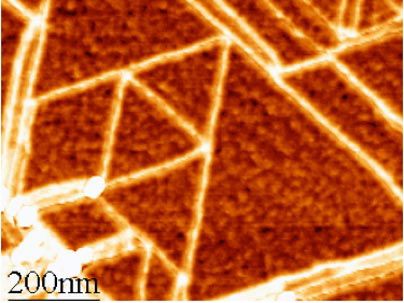
For starters, its unique electrical characteristics could make graphene the successor to silicon in a whole new generation of microchips, surmounting basic physical constraints limiting the further development of ever-smaller, ever-faster silicon chips.
MIT has become a major center of work on this hot topic, with several different research groups pursuing various aspects — including physical, chemical, electronic and engineering — of the novel material.
Graphene, a form of the element carbon that is just a single atom thick, had been identified as a theoretical possibility as early as 1947. Even as Institute Professor Mildred Dresselhaus, her physicist husband Gene, and others were working in the 1960s with multiple layers of graphene, many scientists were saying that such an ultra-thin sheet of matter could never be found or even made. “It was very controversial; there were many people who were skeptical,” about the research, she says.



